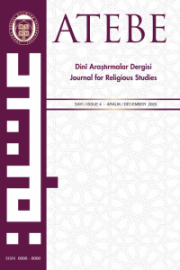
ATEBE Dinî Araştırmalar Dergisi
Yazarlar: ["Nazife Hande YILMAZ"]
Konular:-
DOI:10.51575/atebe.1114567
Anahtar Kelimeler:Din Sosyolojisi,Sosyal Değişim,Modernleşme,Bireysel Değişim,Kıyafet,Kılık,Norbert Elias
Özet: Social change does not occur in the same form and direction in every social structure. In this context, every society experiences the modernization process with its own dynamics. These dynamics started with an intervention either from the top or from outside for the countries that want to be included in the modernization process. Due to the government's modernization initiatives, many differences have been made in the individual and social structure. Because, with the changes in the powers governing the state many times in the short term, the society on the way to modernization has faced a new mentality and modernization steps accordingly. However, this difference has not always been in the way the state predicted and organized it. In this sense, the society sometimes accepted the foreseen change and continued it, and sometimes showed resistance to the change. The failure to legitimize the change successfully in the eyes of the people, however, the fact that it was put to work with various sanctions caused the new norms to not be internalized among the people. The modernization movements that could not be internalized by the society were tried to be applied superficially and formally. However, as a result of the development of information opportunities over time and the convergence of the levels in the state on both political and social planes, modernization has started to take its own motivation from internal processes. Thus, an eclectic culture has emerged between the east and the west, but with its own unique motifs. Individuals who grew up in this line have also applied the patterns of the society while living their own modernization experience. These patterns formed in society have changed the emotional and embarrassment thresholds of individuals. Thus, the sense of control, which started from the outside, descended to the core while human beings were civilized. Based on this background, the aim of our study is to read through clothes, within the scope of Elias' theory of civilization, how the change brought about by Turkish modernization has changed the emotional threshold of a single person in social and individual terms. Literature review was preferred for the progress of the study. The research is limited to dress as a subject. Temporally ıt was limited to the period from the II. Mahmud period to the early Republican period. Thus, the study made inferences about today by going back to the Turkish modernization adventure, which dates back 200 years. The study has been divided into three main parts. While these sections were being presented, the topics were often associated with the "religion" theme.